In order to offer students a more vivid environment in which to learn Chinese and to get a real sense of China,Dr. David Joyner,Executive Director of the Confucius Institute came up with a wonderful idea --- “build” a Pavilion in the classroom! It is not easy to build a real Pavilion without much building material and intricate Chinese decorations; but a solution was provided by Professor Liying Zhang, Co-Director of the Institute,who studied oil painting for more than 10 years and is expert in fresco – paint all the walls to create an immersive cultural experience. So in a highly creative and low-carbon way Prof.Zhang set about presenting typical Chinese scenery and buildings,assisted by two second year Art degree students from the local Further Education College, David and Stacey. After they finished painting the Pavilion, students from Bangor University named them the Michelangelo team.The pavilion is designed by Prof.Zhang,having chosen four representative Chinese scenes – a teahouse, Guilin landscape, the Great Wall and Xidi.A teahouse is an establishment which primarily serves tea and other light refreshments. Although its function varies widely depending on the culture, tea houses often serve as centers of social interaction. In China,people gather at tea houses to chat,socialize, and enjoy tea, and young people often meet at teahouses for dates. The teahouse scene will be the main background for the performing area in the Confucius Institute.
The Guilin landscape has long been praised as the most picturesque place in China and is one of the must-see sites for most western tourists. It is a charming place at any time of the year with its pleasant subtropical climate. The name of Guilin, literally means "forest of sweet osmanthus", owing to the large number of fragrant Sweet Osmanthus trees located in Guilin city. In 1981, Guilin was listed by the State Council as one of the four cities (the other three being Beijing,Hangzhou and Suzhou)where the protection of historical and cultural heritage, as well as natural scenery, should be treated as a priority project.Xīdì is a village in China;’southern Anhui province, which was declared a part of the "Ancient Villages in Southern Anhui" World Heritage Site by UNESCO in 2000, along with the village of Hongcun.First built during the Huangyou era(1049–1053) of Song Dynasty by Emperor Renzong, the village was originally called Xichuan (West River), owing to the various water courses flowing through it.Today, 124 well preserved wooden residences from the Ming and Qing dynasties with beautiful carvings form the major attractions.Many of these residences are open to the public.
The Great Wall reflects collision and exchanges between agricultural civilizations and nomadic civilizations in ancient China. It provides significant physical evidence of the far-sighted political strategic thinking and mighty military and national defence forces of central empires in ancient China, and is an outstanding example of the superb military architecture, technology and art of ancient China. It embodies unparalleled significance as the national symbol for safeguarding the security of the country and its people.The Great Wall was continuously built from the 3rd century BC to the 17th century AD on the northern border of the country as the great military defence project of successive Chinese Empires, with a total length of more than 20,000 kilometers.
The door of the teahouse is based on the style of Beijing Lao She Teahouse.If you want to taste of Beijing old style tea-house, the Lao She Teahouse (Chinese Name : 老舍茶馆) must be your first choice, a wonderful wooden stage provides an a classical ambience, where is also a nice place to taste the specific culture -- "Tea Culture" in China.It includes articles, poems, and pictures about tea, the art of making and drinking tea.

Our three painters make a draft for theTeahouse.
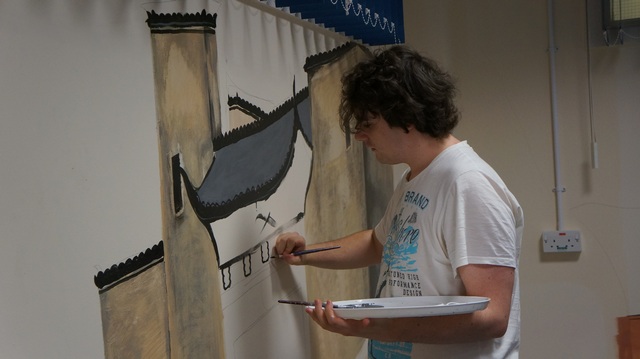
David painted the Xidi Village.
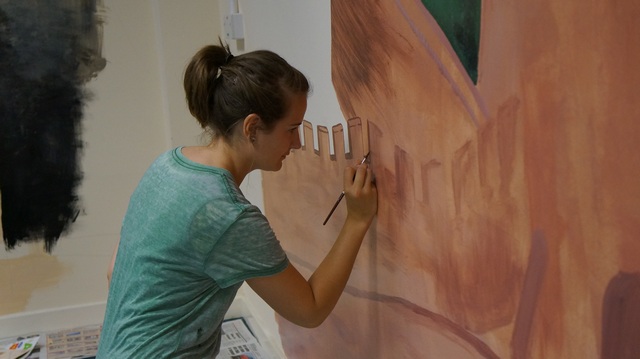
The Great Wall drawn by Stacy.
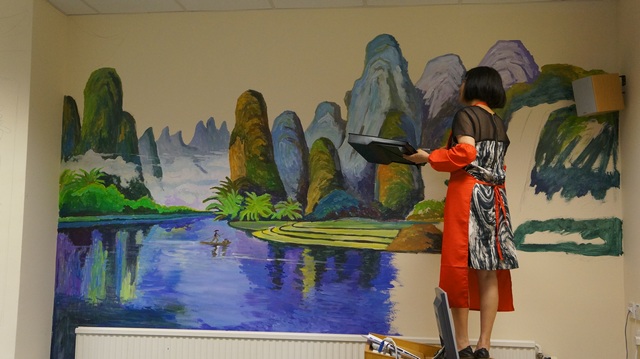
Li-River and beautiful mountains painted by Prof.Zhang.
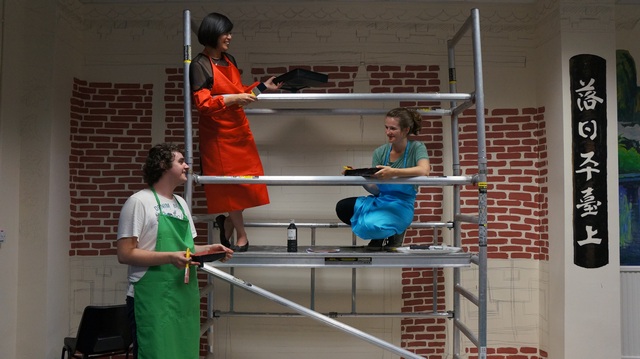
Drawing the Teahouse together.
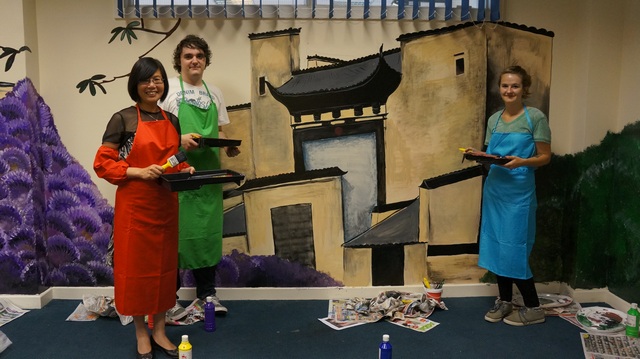
Xidi Village Finished.
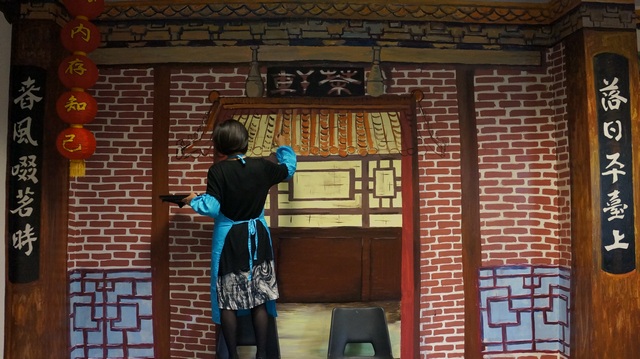
Teahouse Finished.

